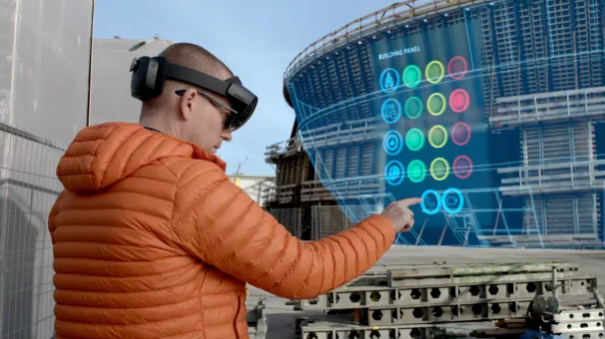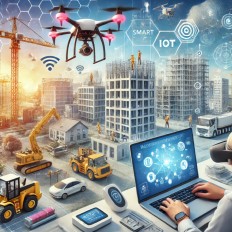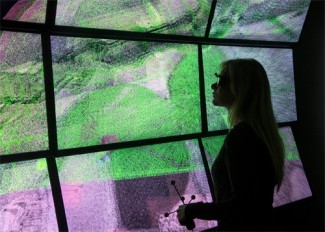VR, remote labs, and the future of civil engineering education

Civil engineering programs now treat virtual labs as essential. Students run structural tests, soil behavior analyses, and systems modeling from laptops with professional-grade tools. The rapid pivot during the pandemic revealed a lasting benefit. Learners replay experiments, vary inputs, and see results immediately, which strengthens conceptual understanding and speeds feedback. Programs report safer learning from simulated failures, pattern recognition through repetition, and instant data visualization that connects actions to outcomes.
This integration is now widely adopted across industry, where engineers routinely use it to enhance planning and on-site coordination. Introducing students to these tools ensures they develop practical skills aligned with current professional practice.

Virtual reality adds depth that 2D methods cannot match. Students explore reinforced concrete details, substructure components, and underwater or underground works that are typically hidden. Transparent views reveal rebar layouts, foundation systems, and staged bridge construction. VR also supports training on drafting, structural analysis, and parametric design inside interactive environments. Remote labs extend access even further. Institutes deploy platforms that let students book equipment, run experiments with real hardware, and submit outputs online. This model increases flexibility, broadens access to advanced tools, and documents every step for instructors. Research emphasizes the need for strong pedagogy in online labs, combining real-world data, interactive simulations, and engagement strategies to maintain hands-on rigor.

Industry now expects fluency with BIM, data workflows, and analysis software from day one. Virtual and remote labs help meet that expectation by mirroring professional file formats and documentation practices. Collaboration scales globally as cloud platforms keep teams on a single, current dataset. Challenges remain, including connectivity limits, hardware needs, and data privacy. Programs address these through scheduled access, guided assessments, and robust security. The trajectory points to deeper integration of AI for feedback, digital twins for asset monitoring, and AR or XR for field-aligned instruction. The outcome is a safer, more accessible pathway to practical competence that aligns closely with modern engineering practice.
Following illustrations of a VR adaptation and it's benefits in engineering education.
Sources: edtechinnovationhub.com, engineering.com, ixrlabs.com
Want to read more like this story?

Civil Engineering in the Digital Age: Top Innovations Shaping the Future
Jul, 16, 2024 | NewsThe world of civil engineering is experiencing a significant digital transformation. Innovative tec...

Virtual Reality system offers engineers new monitoring perspectives!
Jan, 14, 2015 | NewsAn innovative virtual reality system, developed in the UK, for various engineering purposes, aims in...

Pioneering the Future of Construction Health & Safety: Global Trends for 2025
Jan, 10, 2025 | NewsThe construction industry worldwide is undergoing a transformation driven by technological innovati...

Digital Twin Infrastructure: Building Safer Bridges with AI
Aug, 20, 2025 | NewsArtificial intelligence is emerging as a powerful tool to improve the safety and resilience of brid...
2nd International Scientific and Practical Conference on Soil Mechanics, Geotechnics and Foundation Engineering
Sep, 04, 2025 | EventThe 2nd International Conference on Soil Mechanics, Geotechnics & Foundation Engineering (GEOMO...

Satellite data and AI drive the next wave of sustainable infrastructure in the UK
Oct, 03, 2025 | NewsThe United Kingdom is advancing the integration of satellite data and artificial intelligence (AI...

Engineering students participate in bridge construction in Bolivia
Jul, 23, 2018 | NewsEngineering students from the University of Alberta aid in the construction of a bridge in a small c...

Harnessing Drone Technology for Highway Construction
Jun, 25, 2024 | NewsIn recent years, the integration of drone technology in civil engineering has revolutionized the in...

An innovative Microsoft program to help solve some of the biggest environmental challenges of our time
Oct, 16, 2017 | News‘Al for Earth’ is putting artificial intelligence in the hands of researchers and organi...
Trending

Vertical gardens in Mexico City to combat pollution

Characteristics of Load Bearing Masonry Construction

Taipei 101’s impressive tuned mass damper

Morocco Implements Landmark Dam Perforation to Combat Water Stress in Marrakech

Dutch greenhouses have revolutionized modern farming

The Line at Neom faces feasibility reassessment while construction continues

A new chapter for Sunderland: The £31 million Keel Crossing opens

